This is a drawing of the history of the inside of an icy moon.
Image from: The New Solar System
Where did the atmosphere come from?
Titan is like other
icy moons. Scientists want to know "how come Titan is the only one that has a big atmosphere?"
Titan formed the same way other planets did, as shown in this picture. Where Titan formed, the nebula was colder than it was near Jupiter. The nebula near Titan was so cold that even the molecule Nitrogen could become solid.
This means Titan is probably made of Nitrogen ice! Saturn is giving off heat, so it is warm enough for Nitrogen to evaporate and form the air of Titan.
You might also be interested in:
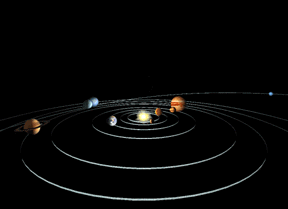
Scientists believe that the solar system was formed when a cloud of gas and dust in space was disturbed, maybe by the expl osion of a nearby star (called a supernova). This explosion made waves in space
...more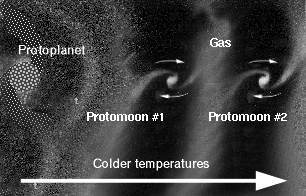
Titan is like other icy moons. Scientists want to know "how come Titan is the only one that has a big atmosphere?" Titan formed the same way other planets did, as shown in this picture. Where Titan formed,
...more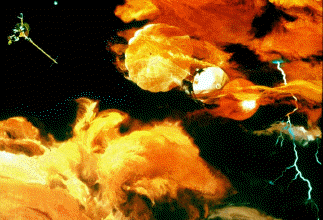
The air of Titan is a lot like the Earth's, except that it is very cold, from -330 degrees to -290 degrees! Like the Earth, there is a lot of Nitrogen and other complex molecules. There also may be an
...more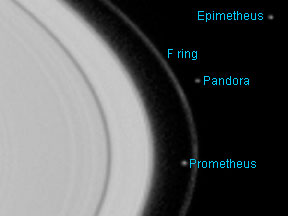
Pandora is a small moon of Saturn. It was discovered by S. Collins and others in 1980 from photos taken by the Voyager 1 spacecraft. Pandora's name comes from Greek mythology. Pandora was the first woman,
...more
Prometheus is a small moon of Saturn. It was discovered by S. Collins and others in 1980 from photos taken by the Voyager 1 spacecraft. This moon's name comes from Greek mythology. Prometheus was a Titan
...more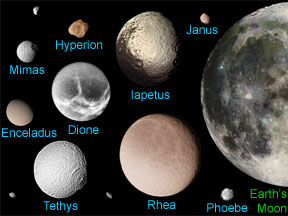
Saturn has // Call the moon count function defined in the document head print_moon_count('saturn'); moons. Many of those are tiny chunks of rock or ice only a few kilometers (miles) across. One of Saturn's
...more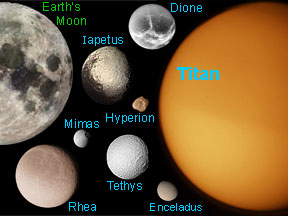
Saturn has // Call the moon count function defined in the document head print_moon_count('saturn'); moons. Many of those are tiny chunks of rock or ice only a few kilometers (miles) across. One of Saturn's
...more













